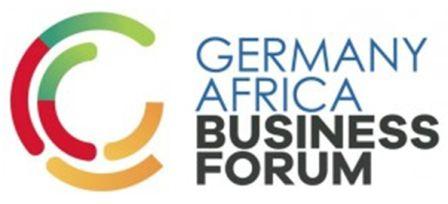Fraud, cyber, and security incidents are now the “new normal” for companies across the world, according to the executives surveyed for the 2016/17 Kroll Annual Global Fraud and Risk.
The proportion of executives that reported their companies fell victim to fraud in the past year rose significantly to 82%, from 75% in 2015 and 70% in 2013, highlighting the escalating threat to corporate reputation and regulatory compliance.
Cyber incidents were even more commonplace; with 85% of executives surveyed saying their company has suffered a cyber incident over the past 12 months. Over two-thirds (68%) reported the occurrence of at least one security incident over the course of the year.
- The threat from within
Despite widespread concerns about external attacks, the findings reveal that the most common perpetrators of fraud, cyber, and security incidents over the past 12 months were current and former employees.
Six out of ten respondents (60%) who worked for companies that suffered from fraud identified a combination of perpetrators that included current employees, former employees, and third parties. Almost half (49%) said incidents involved all three groups. Junior staff were cited as key perpetrators in two-fifths (39%) of fraud cases, followed by senior or middle management (30%) and freelance or temporary employees (27%). Former employees were also identified as responsible for 27% of incidents reported.
Overall, 44% of respondents reported that insiders were the primary perpetrators of a cyber incident, with former employees the most frequent source of risk (20%), compared to 14% citing freelance or temporary employees and 10% citing permanent employees.
Adding agents or intermediaries to this “insider” group as quasi-employees increases the proportion of executives indicating insiders as the primary perpetrators to a majority, 57%.
Over half of respondents (56%) said insiders were the key perpetrators of security incidents, with former employees again the most common of these (23%).
Tommy Helsby, Co-Chairman, Kroll Investigations & Disputes, commented: “This year’s Kroll Global Fraud and Risk Report shows that it’s becoming an increasingly risky world, with the largest ever proportion of companies reporting fraud and similarly high levels of cyber and security breaches. The impact of such incidents is significant, with punitive effects on company revenues, business continuity, corporate reputation, customer satisfaction, and employee morale.”
“With fraud, cyber, and security incidents becoming the new normal for companies all over the world, it’s clear that organizations need to have systemic processes in place to prevent, detect, and respond to these risks if they are to avoid reputational and financial damage.”
- Increasingly complex threats
The vast array of perpetrators and ever-evolving nature of incidents reflect an increasingly complex risk management environment for businesses.
Every category of fraud has seen a marked increase between 2015 and 2016. The greatest increases were in the areas of market collusion (15%) and misappropriation of company funds (11%). Theft of physical assets remained the most prevalent kind of fraud suffered in the past year (reported by 29% of respondents), followed by vendor, supplier, or procurement fraud (26%).
Percentage of respondents’ companies affected by different types of fraud
| Type of fraud | Percentage of companies in 2016, globally | Percentage of companies in 2015, globally |
| Theft of physical assets | 29% | 22% |
| Vendor, supplier, or procurement fraud | 26% | 17% |
| Information theft | 24% | 15% |
| Management conflict of interest | 21% | 12% |
| Regulatory or compliance breach | 21% | 12% |
| Internal financial fraud | 20% | 9% |
| Misappropriation of company funds | 18% | 7% |
| Market collusion | 17% | 2% |
| Intellectual property (IP) theft | 16% | 4% |
| Corruption and bribery | 15% | 11% |
| Money laundering | 15% | 4% |
A broad range of cyber incidents were reported. The single most common type of incident reported was a virus or worm infestation, reported by one-third of all companies (33%), followed by an email-based phishing attack (26%).
In the age of big data, nearly a quarter (23%) of respondents said data breaches resulted in loss of customer or employee data, while 19% reported loss of IP, trade secrets, or R&D. More than one in five (22%) suffered data deletion or corruption caused by malware or system issues, and 19% were victims of data deletion by a malicious insider.
Theft or loss of intellectual property was the most common type of security incident, cited by 38% of those who experienced a security incident in the last 12 months.
- Fraud and security concerns impact overseas expansion
Over two-thirds (69%) of executives say their companies have been dissuaded from operating in a particular country or region due to fraud concerns and just under two-thirds (63%) because of security threats.
- The road to resilience
While insiders are cited as the main perpetrators of fraud, they are also the most likely to discover it. Almost half (44%) of respondents said that a recent fraud had been discovered through a whistle-blowing program, and 39% said it had been detected through an internal audit.
Indeed, three in four respondents indicated that their companies (76%) have adopted employee-focused anti-fraud measures such as staff training or whistle-blowing hotlines. 82% of respondents have adopted anti-fraud measures focusing on information such as IT security or technical countermeasures, and 79% have implemented physical security measures.
The most commonly reported cyber risk mitigation action was conducting in-house security assessments of data and IT infrastructure, implemented by 76% of survey respondents’ companies.
Dan Karson, Co-Chairman, Kroll Investigations & Disputes, commented: “Companies’ greater use of technology and their increasing reliance on international supply chains means they are more at risk from fraud than ever before. In our experience, this risk can be mitigated against by adopting a conscious and proactive approach. Many of the challenges organizations face could be reduced through the implementation of employee and partner education programs or a tighter set of policies that help remove avoidable errors and poor business practices.”










